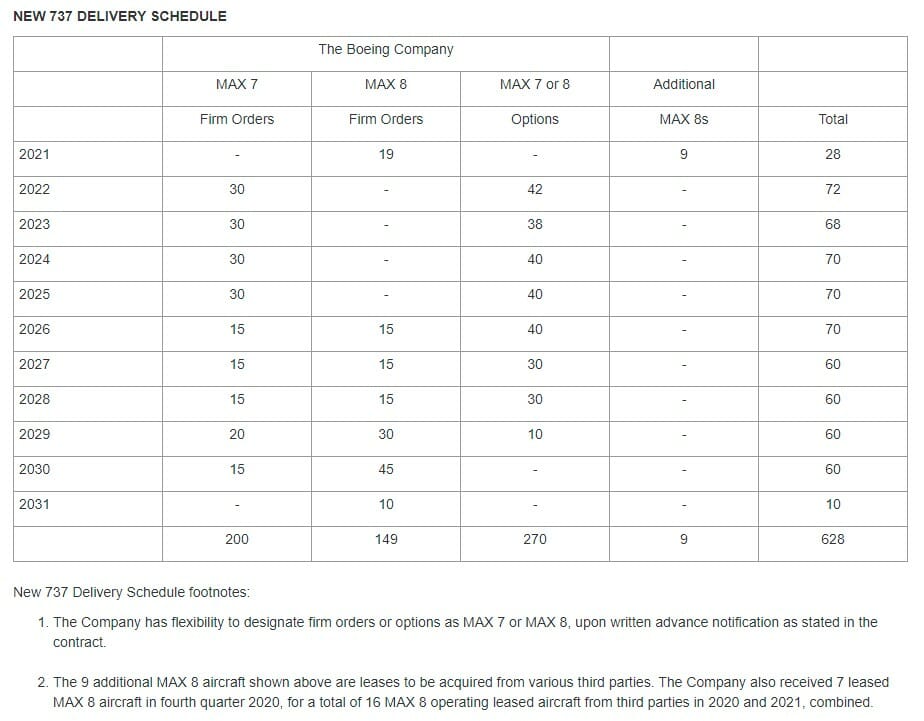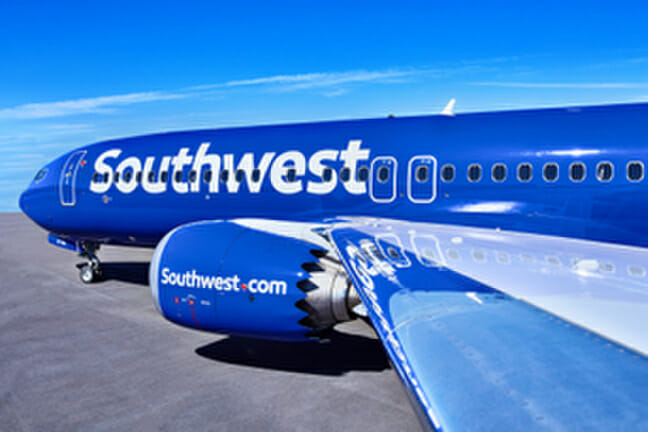Southwest Airlines has just announced the purchase of 100 Boeing 737MAX jets to set the airlines’ fleet plan into the next decade. Previously, I wrote that Southwest was looking into the Airbus A220 as the replacement aircraft for the retiring Boeing 737-700 jets. In that story, I discuss the operational reasons that Southwest had for a large-scale fleet replacement. You can read that story here.
The Company has completed the multi-year evaluation of the successor aircraft to its Boeing 737-700 model, with the selection of the Boeing 737 MAX 7 aircraft. Southwest Airlines and Boeing reached agreement on 100 firm orders for MAX 7 aircraft, with the first 30 scheduled to be delivered in 2022. This agreement underscores Southwest’s commitment to the continued modernization of its fleet with more fuel-efficient and climate-friendly aircraft. Included in this order is an option to purchase an additional 150 737MAX jets.
Fleet Modernization
As part of the agreement, the Company also converted 70 MAX 8 firm orders to MAX 7 firm orders and added 155 MAX options for MAX 7 or MAX 8 aircraft for years 2022 through 2029. These order book additions and revisions result in a new total of 349 MAX firm orders (200 MAX 7 and 149 MAX 8) and 270 MAX options for MAX 7 or MAX 8 aircraft for years 2021 through 2031. The Company’s previous order book consisted of 249 MAX firm orders (30 MAX 7 and 219 MAX 8) and 115 MAX options for MAX 7 or MAX 8 aircraft for years 2021 through 2026. The Company continues to expect delivery of 28 MAX 8 aircraft in total this year (19 from Boeing and 9 from third-party lessors), as well as 17 737-700 retirements, ending 2021 with 69 MAX 8 aircraft and 729 total aircraft
Today’s announcement reinforces the Company’s confidence in the 737 MAX as the future of the Southwest fleet. This cost-effective order book with Boeing allows the Company to maintain the operational efficiencies of an all-Boeing 737 fleet to support its low-cost, point-to-point route network. The Company was the launch Customer of the MAX 8 and is scheduled to be the launch Customer of the MAX 7 after also launching prior 737 generations, including the -300, -500, and -700 series.
” Southwest Airlines has been operating the Boeing 737 series for nearly 50 years, and the aircraft has made significant contributions to our unparalleled success. Today’s commitment to the 737 MAX solidifies our continued appreciation for the aircraft and confirms our plans to offer the Boeing 737 series of aircraft to our Employees and Customers for years to come,” said Gary Kelly, Southwest’s Chairman and Chief Executive Officer. “We are proud to continue our tradition of being the world’s largest operator of an all-Boeing fleet.”
“The MAX aircraft, with CFM International’s LEAP-1B engines, enable exceptional operational efficiencies such as a 14 percent lower rate of fuel burn1 that reduces carbon emissions, quieter engines which benefit the communities we serve, and excellent dispatch reliability to support our on-time operations,” said Mike Van de Ven, Southwest’s Chief Operating Officer. “In addition to supporting our efforts to operate sustainably and efficiently, the 737 MAX offers Employees and Customers travel comforts such as a quieter cabin, larger overhead bin spaces, seating with adjustable headrests, and more galley space for onboard service.”
The Company expects more than half of the 737 MAX aircraft in its firm order book will replace a significant amount of its 462 737-700 aircraft over the next 10 to 15 years to support the modernization of its fleet, a key component of its environmental sustainability efforts. Southwest is proud of its fuel efficiency improvement of nearly 50 percent since 20002, and the billions of dollars in capital expenditures committed to the 737 MAX order book reinforces the airline’s commitment to further improve fuel efficiency and reduce carbon emissions.
“We remain diligent in managing costs and capital spending, in particular in this environment. Our refreshed order book with Boeing allows Southwest to preserve the low-cost advantages of a single fleet type, and the balance of firm orders and options—along with flexibility with 737-700 retirement plans—allows the opportunity to manage our fleet needs over the next decade,” said Tammy Romo, Executive Vice President and Chief Financial Officer. “We now estimate contractual aircraft capital spending for all years 2021 through 2026, which consists of 169 MAX firm orders with Boeing (135 MAX 7 and 34 MAX 8 aircraft), to be approximately $5.1 billion. Our estimated contractual aircraft capital spending remains immaterial in 2021, and is expected to be approximately $700 million in 20223. We continue to estimate 2021 capital expenditures to be no more than $500 million, driven primarily by technology, facilities, and operational investments.”
Delivery Schedule
This order also converts some previously undelivered aircraft from the 737 Next Generation to the 737MAX version. The order will deliver the new 737MAX aircraft to Southwest over the next ten years.

Final Thoughts
This is a strategic business decision for the airline to replace their current fleet of Boeing 737-700 jets. These aircraft are over 20 years old and they will be due for costly “D Check” maintenance which could cost up to $2 million dollars per aircraft. The 737MAX aircraft will reduce their fuel consumption on the same routes by 15% with the new LEAP-1B engines which will also reduce the airlines’ carbon footprint.
Southwest looked at the Airbus A220 aircraft as a possible replacement. In a head-to-head showdown, both aircraft had their advantages. There are huge cost savings for an airline to operate a single aircraft type in terms of aircrew training and maintenance costs. The Airbus A220 had a cost advantage over the 737MAX with its lighter weight providing a slight edge in fuel economy. This was not enough to outweigh the cost-benefit of a single aircraft type operation. What the Airbus consideration did was to put Southwest in a position to force Boeing to lower the price of the 737MAX.
Well played, Southwest Airlines.





